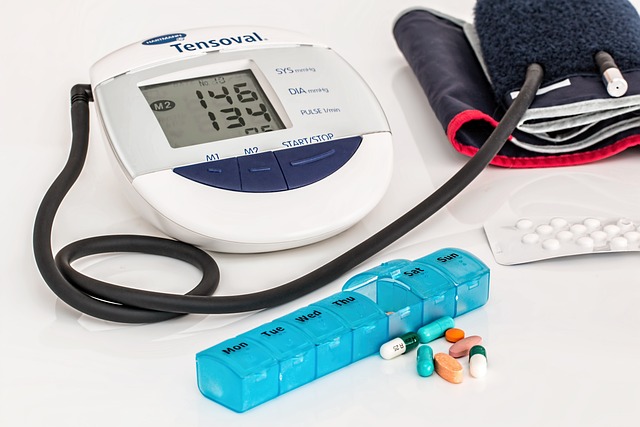Quality assurance and risk management play a crucial role in the medical device industry. As technology advances and healthcare demands grow, the need for safe and effective medical devices becomes more critical than ever.
This article will discuss the importance of quality assurance and risk management in the medical device industry, outlining the necessary processes, best practices, and relevant regulatory frameworks that ensure patient safety and product reliability.
The Importance of Quality Assurance and Risk Management
Medical devices are an integral part of modern healthcare, providing essential diagnostic, therapeutic, and monitoring capabilities. These devices range from simple tools like syringes to sophisticated machines such as MRI scanners and implantable pacemakers. The safety and efficacy of these devices are paramount as they directly impact patient health and well-being.
Quality assurance (QA) and risk management are essential components of the medical device development process. QA involves a systematic approach to ensuring that a medical device meets established safety, performance, and reliability standards. Risk management, on the other hand, entails identifying, assessing, and mitigating potential hazards associated with a medical device throughout its lifecycle. By implementing robust QA and risk management systems, manufacturers can minimize the risks of device malfunctions, patient harm, and regulatory non-compliance.
Regulatory Frameworks
Various regulatory bodies worldwide oversee the development, manufacturing, and distribution of medical devices. In the United States, the Food and Drug Administration (FDA) sets forth the regulations and guidelines for medical device manufacturers. The European Union (EU) has its regulatory framework, known as the Medical Device Regulation (MDR), overseen by the European Medicines Agency (EMA).
Other countries have their regulatory bodies and standards, but many align with the principles established by the FDA and EMA.
The International Organization for Standardization (ISO) also plays a significant role in establishing globally recognized standards for the medical device industry. ISO 13485:2016 is the international standard for quality management systems (QMS) specific to medical devices. It outlines the requirements for a comprehensive QMS, including processes for risk management, design controls, and post-market surveillance.
Compliance with ISO 13485 is often a prerequisite for obtaining regulatory approval in many countries. Another critical standard is ISO 14971:2019, which focuses on the application of risk management to medical devices. This standard provides a framework for manufacturers to identify, assess, and control potential hazards throughout the entire lifecycle of a medical device.
Quality Assurance Processes
Quality assurance processes within the medical device industry involve several key elements:
- Design Controls
The development of a medical device begins with a well-defined design process, ensuring that the product meets user needs and regulatory requirements. Design controls include establishing design inputs, outputs, verification, validation, and design change management procedures.
- Supplier Management
Manufacturers must evaluate and select suppliers based on their ability to provide components and services that meet predefined quality requirements. Regular audits, inspections, and performance evaluations are crucial for maintaining strong supplier relationships.
- Production and Process Controls
Manufacturing processes must be validated, documented, and controlled to ensure consistent output. This includes establishing standard operating procedures (SOPs), work instructions, and process monitoring systems.
- Non-conformance Management
When a product or process fails to meet the established requirements, manufacturers must identify the root cause and implement corrective and preventive actions (CAPA) to prevent recurrence.
- Internal Audits and Inspections
Regular internal audits and inspections ensure that the QMS is effectively implemented and maintained. These audits can identify areas of non-compliance, assess the effectiveness of process improvements, and provide feedback for continuous improvement.
Risk Management Process Risk management for medical devices involves a continuous, systematic process that spans the entire lifecycle of a device. The following steps outline a typical risk management process:
- Risk Identification
Manufacturers must identify potential hazards associated with a medical device, considering both intended use and reasonably foreseeable misuse. This involves examining the device’s design, materials, manufacturing processes, and potential user interactions.
- Risk Analysis
After identifying potential hazards, manufacturers must assess the associated risks by considering the severity of potential harm and the probability of occurrence. This analysis helps prioritize risks and focus mitigation efforts on the most significant concerns.
- Risk Evaluation
Manufacturers must determine the acceptability of identified risks by comparing them against established risk acceptability criteria. Unacceptable risks must be reduced or eliminated through design improvements or other risk control measures.
- Risk Control
Risk mitigation measures should be implemented to reduce or eliminate unacceptable risks. These measures can include design modifications, manufacturing process improvements, user training, and appropriate labeling or instructions for use.
- Risk-Benefit Analysis
For any residual risks that cannot be further reduced, manufacturers must conduct a risk-benefit analysis to determine if the overall benefits of the medical device outweigh the remaining risks.
- Risk Management Report
A comprehensive risk management report should be created and maintained, documenting the entire risk management process, including risk identification, analysis, evaluation, and control measures.
- Post-Market Surveillance
After the medical device is released to the market, manufacturers must monitor its performance, gather user feedback, and track adverse events to identify any new risks or changes in existing risks. This ongoing surveillance may result in additional risk management activities or device modifications.
Best Practices for QA and Risk Management
In addition to following regulatory requirements and standards, medical device manufacturers should adopt best practices to optimize their QA and risk management processes:
- Foster a Quality Culture
Encourage a corporate culture that values quality and safety, promoting open communication and a proactive approach to risk management.
- Engage Cross-Functional Teams
Involve experts from various disciplines, such as engineering, manufacturing, regulatory affairs, and clinical, in the QA and risk management processes to ensure a comprehensive understanding of potential risks and their mitigation strategies.
- Implement Continuous Improvement
Continuously monitor, review, and improve QA and risk management processes, leveraging data-driven insights, and learning from both successes and failures.
- Utilize Technology
Employ advanced technology solutions, such as risk management software, data analytics, and automation, to streamline QA and risk management processes and enhance decision-making.
The Value and Need for Expert Medical Staff
As the medical device industry continues to advance, the need for expert medical staff becomes increasingly crucial in ensuring quality assurance and effective risk management.
Experienced recruiters that specialize in the health industry play a significant role in identifying and attracting top talent to manage new medical devices and technologies, ultimately protecting patients and promoting innovation.
- Device Training and Education
Expert medical staff must be trained to use new medical devices and technologies effectively and safely. Their expertise ensures that these devices are used as intended, minimizing the risk of errors or complications that could result in patient harm.
Medical device executive recruiters can help organizations find the right professionals with the necessary skills and experience to manage these cutting-edge technologies.
- Clinical Evaluation
Medical professionals with relevant expertise are essential in the evaluation of new medical devices during clinical trials.
Their experience allows them to assess the safety, efficacy, and potential risks associated with a device, providing valuable feedback to manufacturers and helping refine the device design and usage instructions. Executive recruiters can help identify and attract these skilled professionals to contribute to the development and assessment of new devices.
- Device Selection and Implementation
Expert medical staff play a critical role in selecting the most appropriate devices for their healthcare settings. They can assess the needs of their patients and determine which devices will best address those needs while minimizing potential risks.
Executive recruiters can assist in finding professionals with the knowledge and experience required to make informed decisions regarding device selection and implementation.
- Monitoring and Maintenance
Medical professionals are responsible for monitoring the performance of medical devices in their care settings, ensuring they continue to function correctly and safely.
They should also oversee routine maintenance and calibration to prevent device malfunctions and maintain optimal performance. Executive recruiters specializing in the medical device industry can help organizations find the right candidates who possess the necessary expertise for these crucial tasks.
- Adverse Event Reporting
When issues or adverse events do occur, expert medical staff must promptly report these incidents to the appropriate regulatory authorities and device manufacturers.
This information helps identify potential risks, trends, or patterns and drives improvements in device design and risk management processes. Medical device executive recruiters can help healthcare organizations find professionals who are well-versed in adverse event reporting and risk mitigation.
- Collaborating with Manufacturers
Medical professionals serve as valuable partners to device manufacturers, providing critical insights and feedback to help improve device design, functionality, and safety.
By collaborating with manufacturers, expert medical staff contribute to the ongoing advancement of the medical device industry.
Executive recruiters can help organizations identify and hire professionals who possess the skills and experience necessary for effective collaboration with device manufacturers.
Mitigating Medical Device Risk
Quality assurance and risk management are integral to the medical device industry, ensuring that devices are safe, effective, and compliant with relevant regulations. By implementing robust QA and risk management systems, manufacturers can minimize the risks of device malfunctions, patient harm, and regulatory non-compliance. Adopting best practices and leveraging technology can further optimize these processes, ultimately enhancing patient care and driving innovation in the medical device industry.







